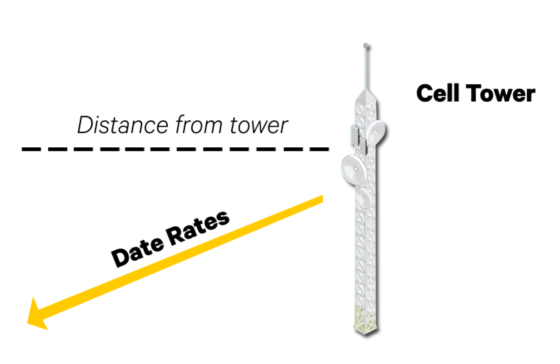Introduction to Broadband and Convergence
How to Choose the Right Communication Bearers
Pros and Cons of LTE
Long Term Evolution or LTE is an open standard digital cellular technology that is already proving to be a game changer in critical communications as it offers a combination of features unmatched by any other wireless technology. These include:
- voice and very high capacity data,
- mobile communication with fast handover across the network,
- low latency,
- excellent resilience,
- built-in quality of service,
- low power consumption,
- and exceptional spectrum efficiency.
It is very fast, with an average network delay or latency that beats WiFi and is much lower than LMR.
A commercial version of LTE features in 4G smartphones and a later version called LTE Advanced provides even faster data rates and lower latency. Combined with low power consumption, real time machine-to-machine communications, monitoring and control through sensor networks, and smart automation become feasible with this kind of performance.

Whereas LMR has been optimized for voice, LTE is clearly optimized for data. In fact, voice over LTE (VoLTE) is a special form of voice over IP, with voice being converted into data packets and re-assembled as audible voice at the receiving end. To meet mission-critical requirements for voice communications requires more than basic VoLTE.
LMR voice services, including PTT, group, broadcast and emergency calling – remain the gold standard here. And while LTE standards have been expanded to encompass these services (e.g. MC-PTT), only evidence from real-life mission-critical operations can determine whether LTE standards developers and manufacturers have succeeded in matching LMR’s achievement.
At first glance LTE with its impressive data performance and low latency looks as though it could replace all other wireless technologies. But LTE too comes with some limitations. LTE cells are small, so significantly more towers are required to achieve the same coverage as LMR. This can be prohibitively expensive compared to either LMR or WiFi.

Also, LTE data rates decrease with distance from the tower, so the data performance you get at a cell boundary may be very much less then you would get next to a tower. And unlike LMR where range depends largely on radio signal propagation and is consistent throughout the cell, LTE coverage is bandwidth sensitive and depends on the network loading at any time. Applications don’t always work at the coverage boundary and – when network traffic is heavy – may fail altogether.
From a security perspective LTE is a better than WiFi. LTE data is encrypted and hacking LTE communication is more difficult, although successful attacks (such as a ‘Man-in-the-Middle’ exploit) are possible.
It is early days for what is undoubtedly a brilliant technology which is still evolving. As we will discuss in the next lesson The Future of LTE, there are features demanded by critical communications users that are either missing or under development, but over time LTE promises to become a dominant mission-critical technology.
 Radio Academy
Radio Academy




